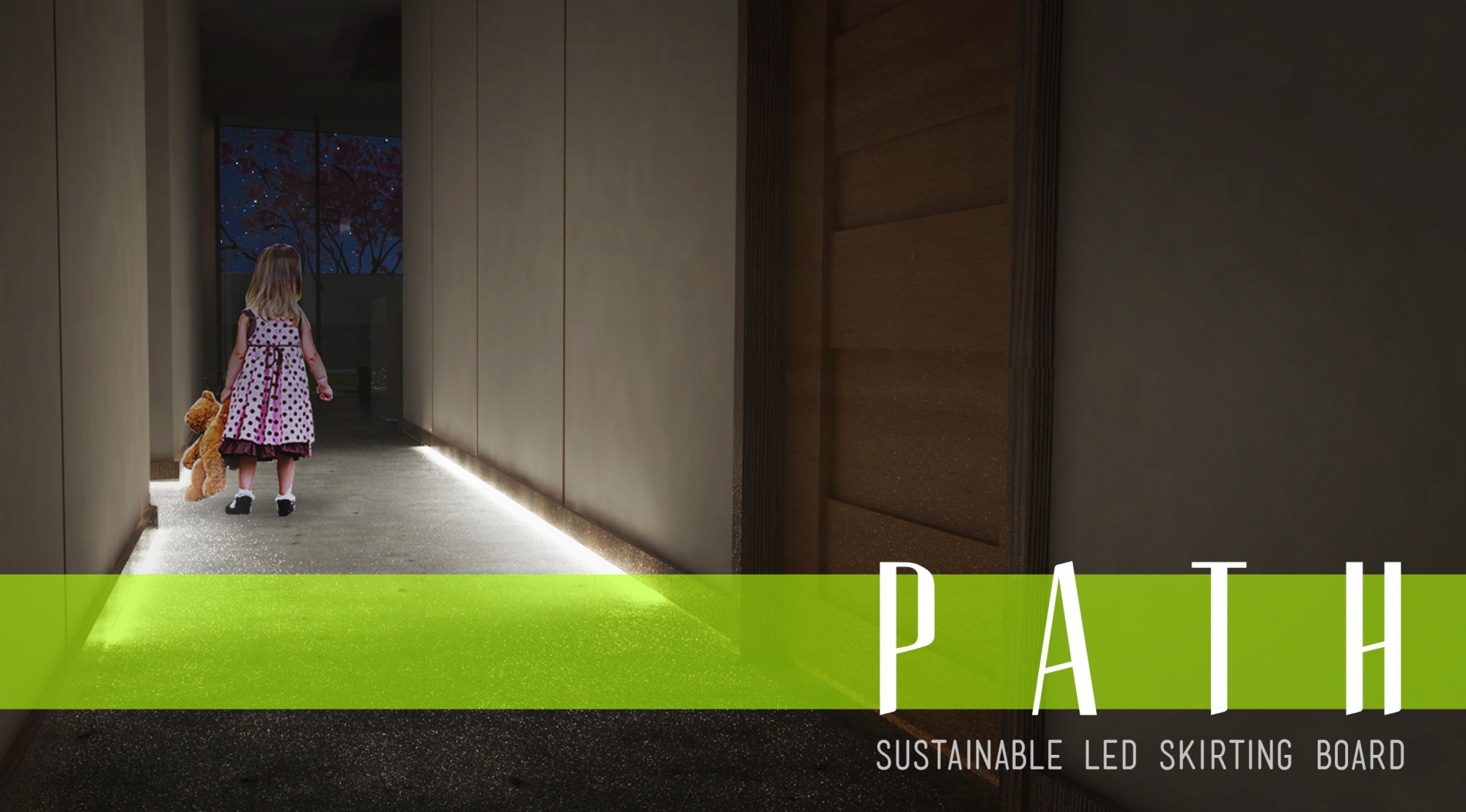Introducing Path LED

We’ve all been there – you wake up in the middle of the night and try to find your way to the bathroom in the dark, or grab yourself a glass of water, only to stub your toe on a cupboard, or trip over a bag you forgot you left out.
Sure, most of the time it’s just annoying, but it can also pose a serious danger.
ADVERTISEMENT
That’s why second year Queensland University of Technology industrial design student Benjamin Donnelly came up with a novel solution: Path LED, a system that allows a user to safely navigate their way around the home through discreet orientation lighting embedded in the skirting board.
Through intelligent sensor technology, the system recognises when a user is in motion and illuminates the respective nearby lights.
Although the system is still in its design stage, the commercial potential is plain to see.
“The technology works in a very similar way to a fire alarm system in regard to sensor placement” Benjamin explains.
“These sensors are located on the ceiling, and as you walk around the house, they detect your movement. They also track speed over time, allowing them to anticipate your next movement and detect which direction you’re walking in – lighting up the skirting in front of you accordingly.”
The system also links with an iPhone app, allowing you to monitor the status of the system, maintain it, reassure it is operating efficiently, alter the lighting’s brightness and colour, set timers and view a map of your dwelling to monitor movement and active areas.
“There’s a home hub that all the LED’s wiring is connected to, which then sends a wireless transmission to the app, enabling you to control it,” Benjamin says.
This monitoring capability allows Path to double as a useful method of security.
“If you are worried you have an intruder in your home at night, nearby lights will illuminate, telling you where they are. You can also check the map on the App to see which part of the house they are in.”
As an additional function, Path can be used as a way of creating ambient mood lighting, depending on the brightness and colour of LED chosen.
However, Benjamin says that first and foremost, the system aims to maintain the safety of a building’s occupants at night.
“One of the big things I looked at was the safety of children in the dark, or lack thereof. If a child wakes up from a bad dream and goes looking for their parents’ room, they run the risk of running into all sorts of hazards, especially if they’re in a panic. This way, they’ll easily be able to find their way around at night.”
When designing Path, Benjamin says that sustainability was always firmly at the forefront of his mind.
“I designed it in a way that makes it easy to be powered by solar technology, but I have also been looking at integrating a system which allows it to be powered by the weight of a person’s footsteps in high flow passageways.”
This type of technology can already be seen in a range of urban tiles designed by Pavegen, which allows the energy from a person’s footsteps to be converted into electricity. This power is then stored and can be used for a variety of applications, such as lighting.
LED manufacturer Brightgreen was particularly impressed by the intelligence and sustainability of Benjamin’s design, and awarded him first place in the Brightgreen 2012 Switched On student design competition.
“It was a huge surprise when I heard I’d won,” Benjamin recalls.
“I saw a poster for the competition in my classroom and I thought I’d give it a go. I put a lot of work into the design, so I’m really glad it paid off in the end.”
-
ADVERTISEMENT
-
ADVERTISEMENT

